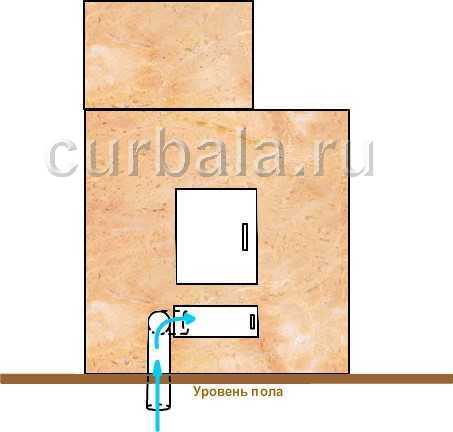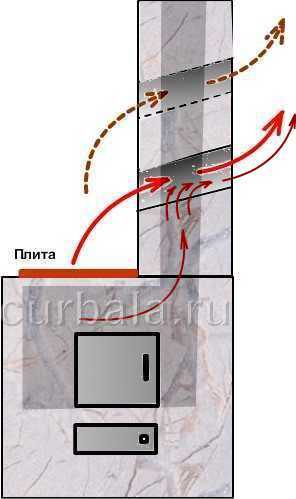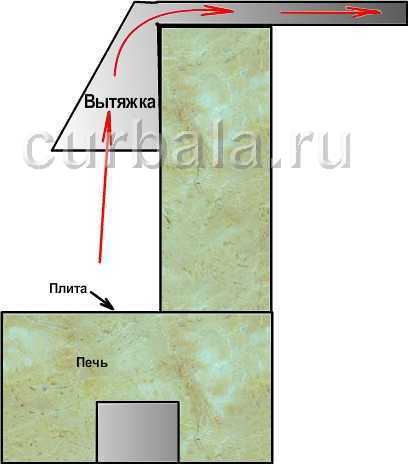Most owners of private houses with main or backup heating from a conventional solid fuel brick stove, folding the stove with their own hands or ordering its installation from a specialist, use traditional masonry methods for certain projects without even realizing that there are folk, time-tested and very simple methods increasing the efficiency of the furnace.
Unfortunately, the designs and schemes of furnaces do not provide for and do not offer options for increasing the efficiency of the furnace, except for the established traditional schemes for increasing the number of revolutions, dimensions and external configuration of the furnace.
But in folk practice (our people are not lacking in ingenuity and experience) very often simple and rather effective methods of increasing the efficiency of the stove are used, which it would be nice to know and use during the initial laying of the stove.
Efficiency is the efficiency of a device for converting and / or transmitting energy. If we relate this definition to a furnace, then its efficiency will be expressed in the ratio of the heat transferred to the room to the amount of heat theoretically contained in the fuel.
It is neither theoretically nor practically impossible to measure the efficiency of a specific furnace and issue a technical passport with specific data for the following reasons:
The efficiency of the furnace is uneven at different stages of the furnace. It can be measured only in a certain period of time and have different values throughout the entire time of the furnace. And this means that with a different period of heating the furnace, their average efficiency will be different;
The efficiency of the furnace has different meanings when burning dry and raw fuel of the same name;
The efficiency of the furnace depends on the amount of heat losses with exhaust gases, chemical and mechanical losses of incomplete combustion of fuel, which depend not only on the device of the furnace, but also on atmospheric pressure, temperature and humidity;
The efficiency of the furnace depends on the amount of ash deposits in the chimneys. And the deposition rate depends on many factors and is different for all furnaces.
As you understand, it is possible to take into account all the parameters only theoretically for a certain stage of the furnace firing, and if you are offered a furnace with an indication of the efficiency value, then this will be a usual advertising move with a specific purpose.
Precisely because it is impossible to express the calculation of the efficiency of the furnace in specific thermal values, it is accepted that the efficiency in general, and not only of the furnace, is expressed as a percentage.
Speaking about ways to increase the efficiency of the stove, we will mean reducing the heat loss of a particular stove, standing or being built in your house, in the intervals between two fireboxes, which will certainly have a positive effect on the speed of heating the air in the room, reducing heat loss and saving fuel.
The proposed methods for a simple but very effective increase in the efficiency of the stove are intended primarily for those who are going to fold the stove with their own hands or have invited a stove-maker who does not know about such methods.
Ways to increase the efficiency of the furnace
Increasing the efficiency of heating the room by changing the airflow.
Those who have a stove as the main and only source of heating for living quarters know that when the stove is fired up and in the first 30 minutes of solid fuel combustion, the temperature in the rooms continues to drop by 2-3 degrees. In this case, the rate of drop in the air temperature in the room is several times greater than the cooling of the room during the usual cooling of the oven.
This happens due to the fact that at the moment of kindling the stove we open the view and warm air from the room rushes out through the pipe, and its place is taken by cold air, which is sucked in by the vacuum created in the room, sharply cooling the apartment.
In the future, as the heat of the fire and draft increase, the rate of cooling of the room or house as a whole continues to increase. Heating of the room will occur only after sufficient heating of the oven masonry, that is, the moment when the rate of heating the room from the heat of the oven becomes greater than the rate of cooling of the room by the sucked cold air.
At the same time, the process of sucking in cold air does not stop the entire period of heating the furnace until the view is completely closed. That is why the efficiency of the furnace is too low, which can fluctuate within fairly large limits, depending on the device of each particular furnace.
The proposed method cannot be directly related to the efficiency of the furnace, but it depends on the method of heating the room and the relationship between the furnace and the air in the room.
It is possible to eliminate this disadvantage of heating the room with a stove and increase the efficiency of heating the air with a simple device.
(picture 1).

A metal pipe with a damper, like a car's carburetor, must be built into the furnace blower. The pipe will play the role of a blower - an air intake, which provides air supply not from the room, but from the underground space. The blower itself will act as an ash collector and a tunnel through which air enters.
To ensure natural ventilation of the room during the heating of the furnace, you can close the damper and the air will begin to circulate in the usual mode for such a furnace.
Such an air intake device not only retains heat during the ignition of the stove, but also increases the efficiency of heating the room during the heating of the stove. That is, it directly affects the efficiency of the furnace.
But, since with such a device, cold air is sucked in underground, and the air in the room remains motionless, the underground will begin to cool down to subzero temperatures in winter. And the cold underground is not only a cold floor, but also a threat to the stocks of food that are usually stored in golbts.
To exclude the cooling of the underground, you can go in two ways: separate the air intake compartment from the general underground or put an extension cord on the end of the pipe with the air intake to the street. PVC or rubber pipes with a diameter of 50mm can be used as extensions.
For those who have an elevated temperature in the space under the floor (in my winter underground, the temperature remains at the level of plus 10-11 degrees, which is undesirable for normal storage of vegetables), this method of increasing the efficiency of the stove will bring additional benefits.
The savings that can be obtained from such a simple device are difficult to calculate, primarily because the efficiency of the furnace is also increased due to a sharp decrease in the cost of solid fuel.
Think and do it - you won't regret it!
Increasing the efficiency of the stove by using the heat of the chimney.
Everyone knows that the air heated in the furnace, regardless of the number of revolutions of the furnace, at the exit from the chimney has a sufficiently high temperature. This happens because in the process of heating the brick masonry of the furnace heats up. At the same time, the more warming up, that is, the longer we heat the stove, the less heat is taken from the chimney brick and the higher the temperature of the gases at the exit from the chimney and the lower the efficiency of the stove.
An episode from my practice. Once I had to go on a business trip to a small village located near the Baikal-Amur Mainline in Siberia. In the "hotel" room - a room measuring 3x4 meters, there was a brick oven. I brought in two armfuls of wood and lit the stove. Imagine my surprise when in a fairly cold room (the frost was about 30 degrees outside) after 10-15 minutes it became warm, and the firewood just started to burn normally. After 40 minutes, I had to open the window, only after that I noticed a metal pipe with a diameter of about 200 mm in the chimney (Figure 2), from which really hot air was coming, instantly heating the room. I have not seen such improvements in any schemes and proposed projects. It remains only to regret that folk wisdom with very great difficulty makes its way to its well-deserved popularity and fame.
To increase the efficiency of the furnace, it is necessary to additionally use the temperature of the hot gases flowing through the chimney. To do this, insert a metal round or square pipe with a diameter of 200-300 millimeters (Figure 2) into the chimney elbow with a slight slope towards the stove plate.

The number of pipes that can be built into the chimney elbow depends on the size of the stove, the number of elbows and your desire. The heating rate of the room will increase sharply due to the high thermal conductivity properties of the metal and additional heat extraction from the chimney and its transfer to the heated room.
Naturally, the efficiency of the stove will increase by the amount of additionally removed heat, at which the hot gases of the stove flue will heat the pipe. The pipe will create air movement and additionally carry hot air away from the stove. Both streams will be redirected through the pipe to the other side of the stove and, if this is an exit to another room, then it will heat up quickly and directly.
Rapid heating of the room will occur because the hot pipe heats up the air circulating in the room, not creating a vacuum, but only increasing the movement of more and more warm air.
Tested in practice: the efficiency of the stove becomes much higher, the room heats up faster (surprisingly quickly), the fuel savings are tangible. Try it, you won't regret it. One condition is that it is easier to build in such a modification during the laying of the stove, if you are laying the stove with your own hands, then the freedom of action and the place of installation of pipes are in your hands.
If you apply the first and second sentences in practice for an already operating furnace, then you will immediately notice the difference in the speed of heating the room and fuel economy before and after the completion of the furnace.
Increase in the efficiency of the furnace due to the additional extraction of heat from the plate.
Another additional method is to increase the efficiency of the furnace, reduce fuel consumption and accelerate the heating of the distant room not adjacent to the furnace wall.
To do this, a hood made of thin stainless steel must be installed above the stove. A pipe with a diameter of 80-100 is connected to the hood
millimeters (Figure 3).

For the manufacture of the hood, you can use galvanized iron. In this case, the hood should be installed not too close to the stove, avoiding strong heating of the metal.
The initial part of the branch pipe (about 1 meter long) should also be metal, and then you can use PVC plumbing pipes, tightly fitted boxes made of boards, MDF wall panels or any other material, including paper pipes, which are used for wrapping rolls of plastic film.
The pipe is run along the wall under the ceiling without sloping back into a distant, poorly heated room. To increase the heating rate of the room at the end of the pipe or in any convenient place inside the pipe, you can install a small, low-noise, 13-watt household electric fan.
As a result, the back room will be heated much faster, the room will become the warmest, and the overall heating of the room will also accelerate. There is only one drawback - when the stove cools down, the flow of warm air stops, although the stove still gives off the heat of the heated brick of the side walls in the room where it is installed. But the general plus of installing the hood above the stove is obvious - accelerated heating of the entire apartment and tangible fuel savings.
All of the above described modifications to increase the efficiency of the furnace can be used both separately and in combination. They do not present any particular difficulties in manufacturing and do not require large expenditures and the use of special equipment or tools. Everything is simple and can be made at home, and the effect is very serious - warmth in the house and fuel economy are tangible.
I wish you all warmth and comfort!








